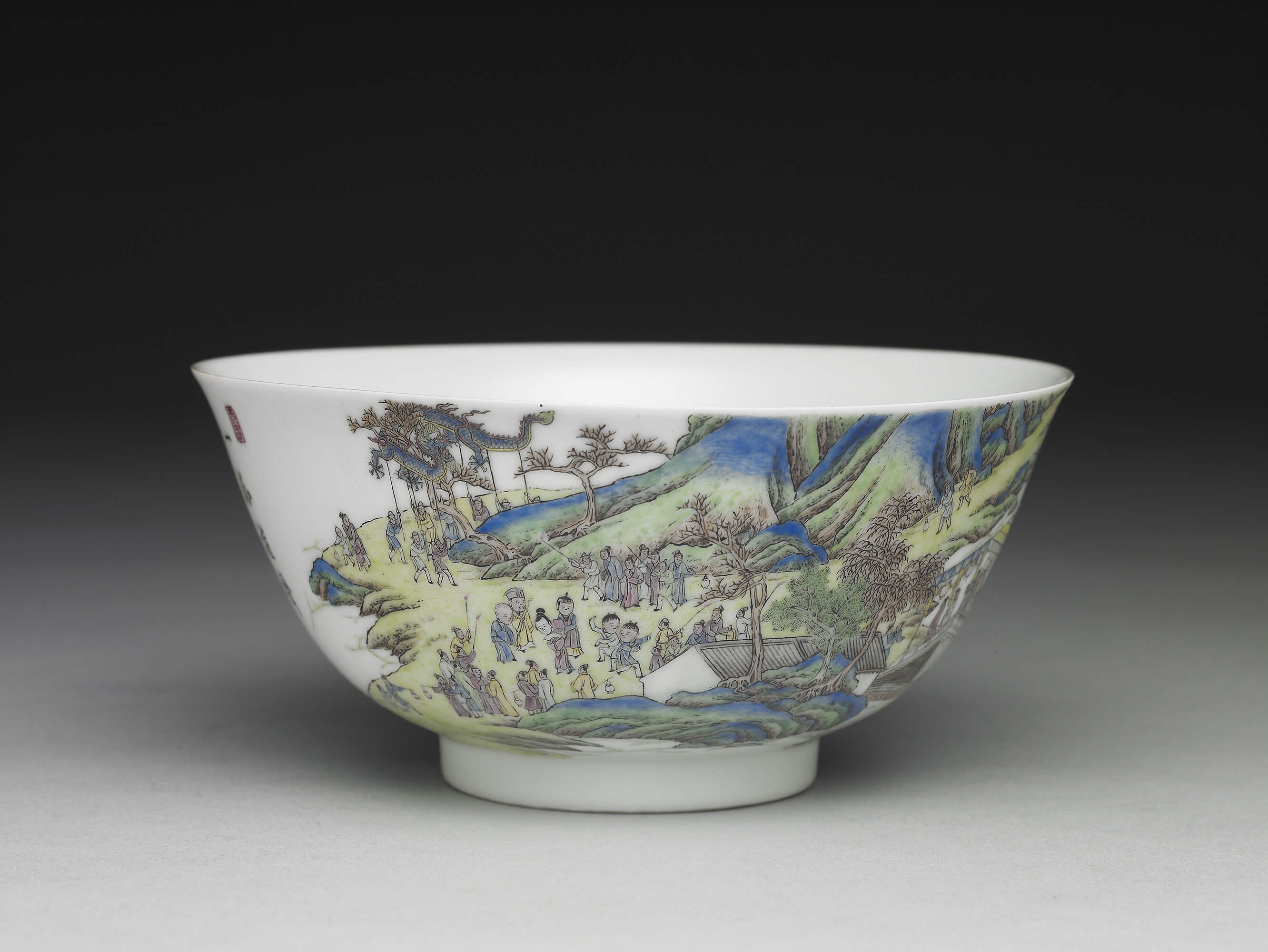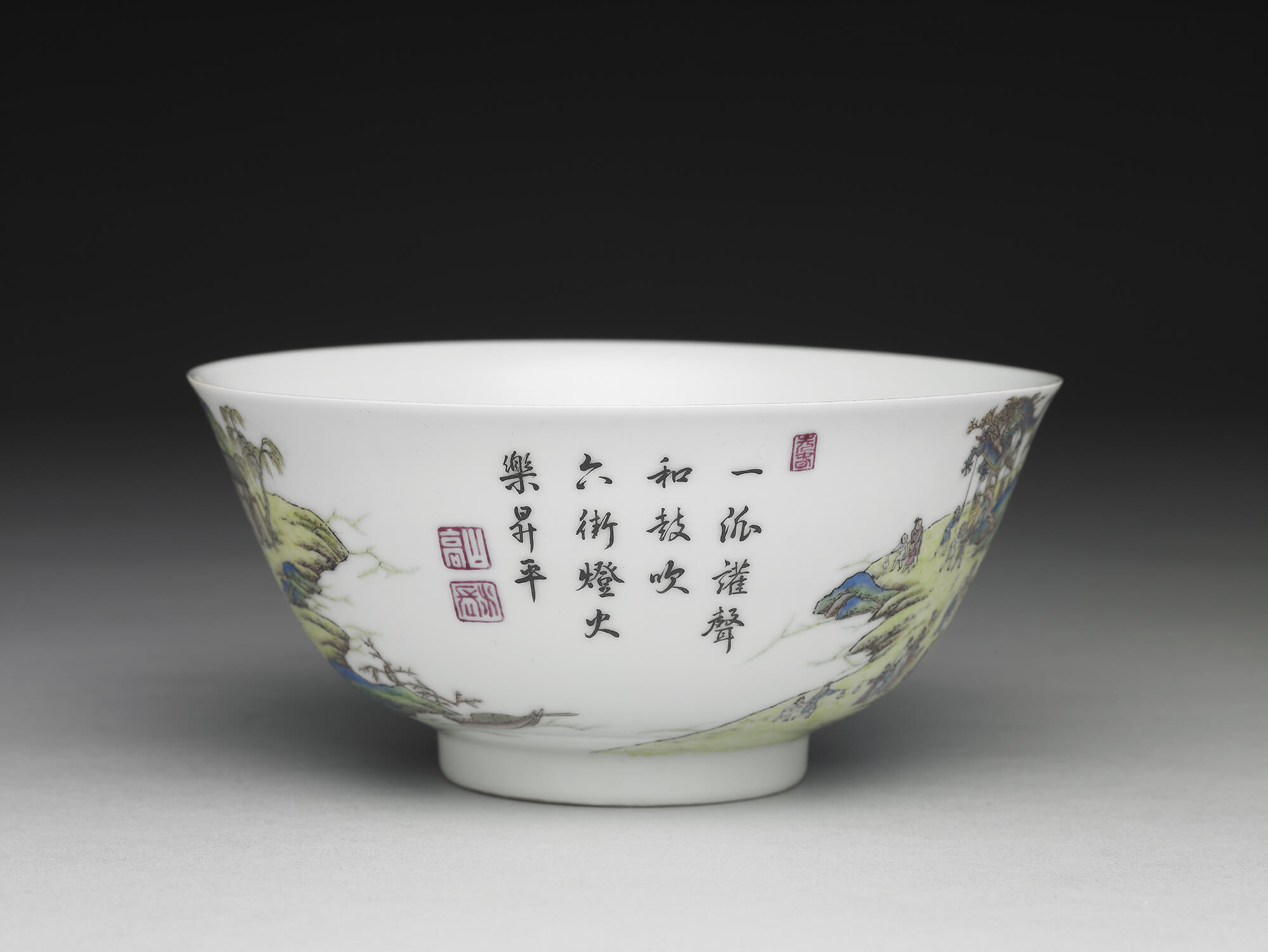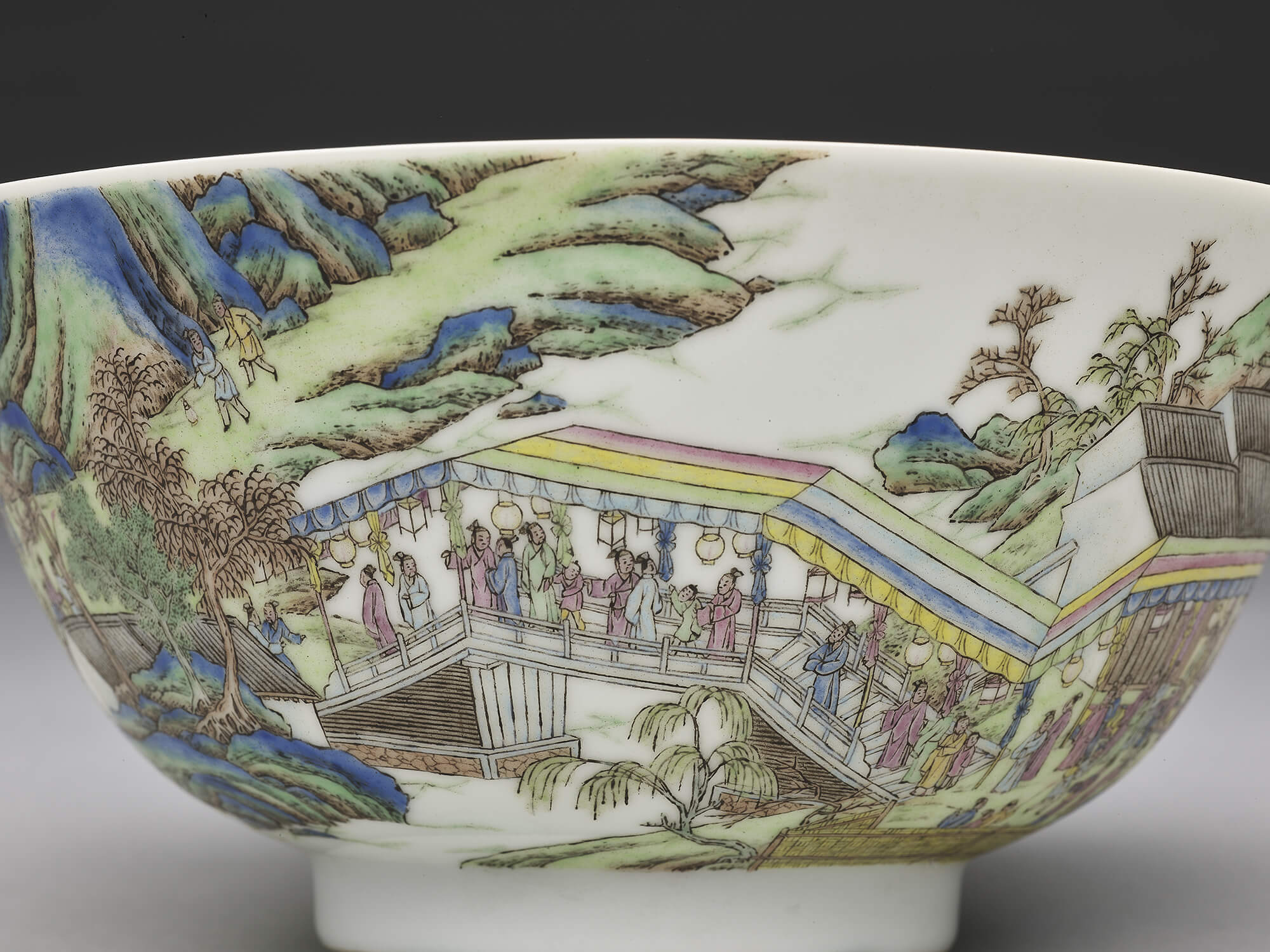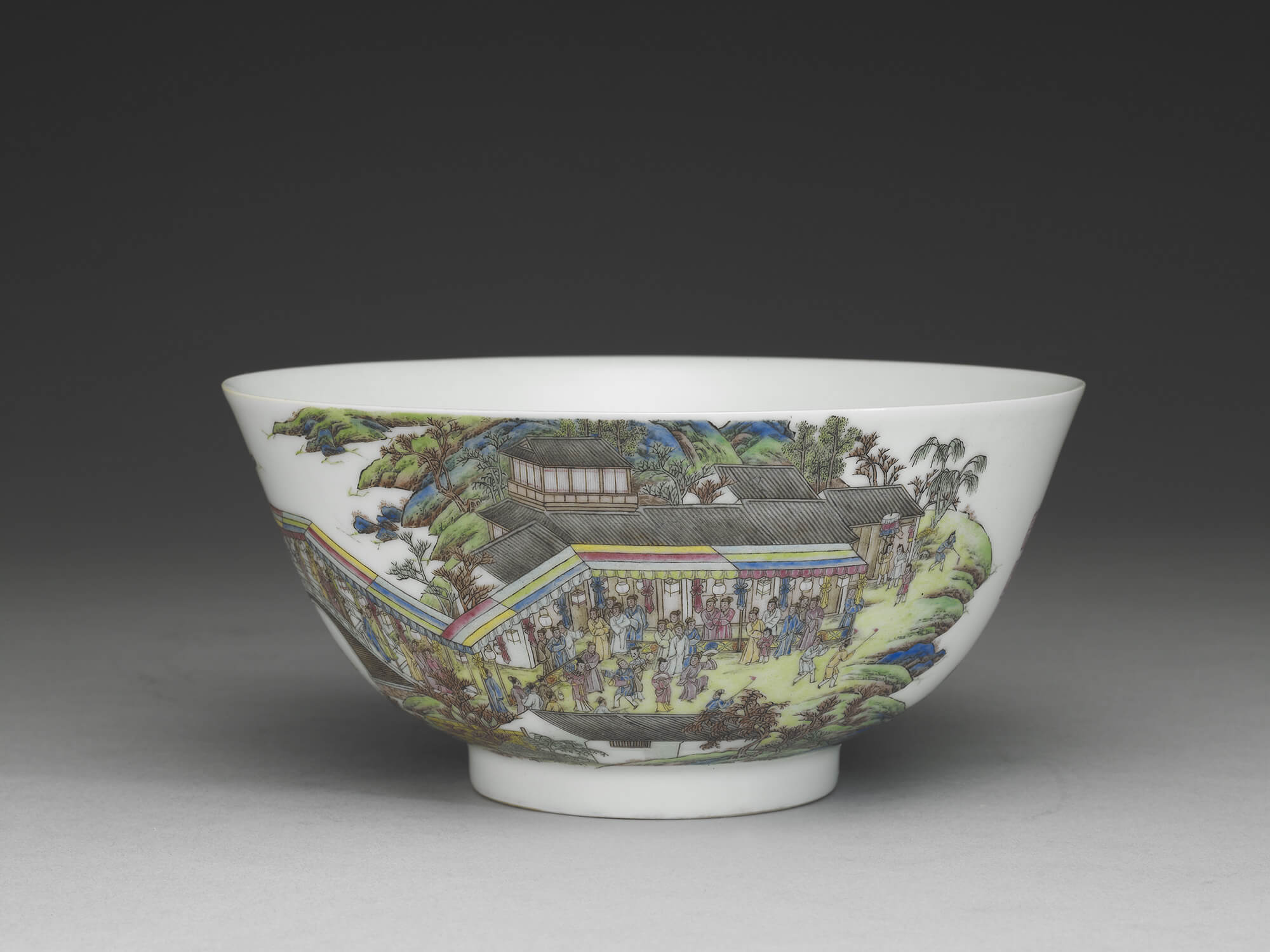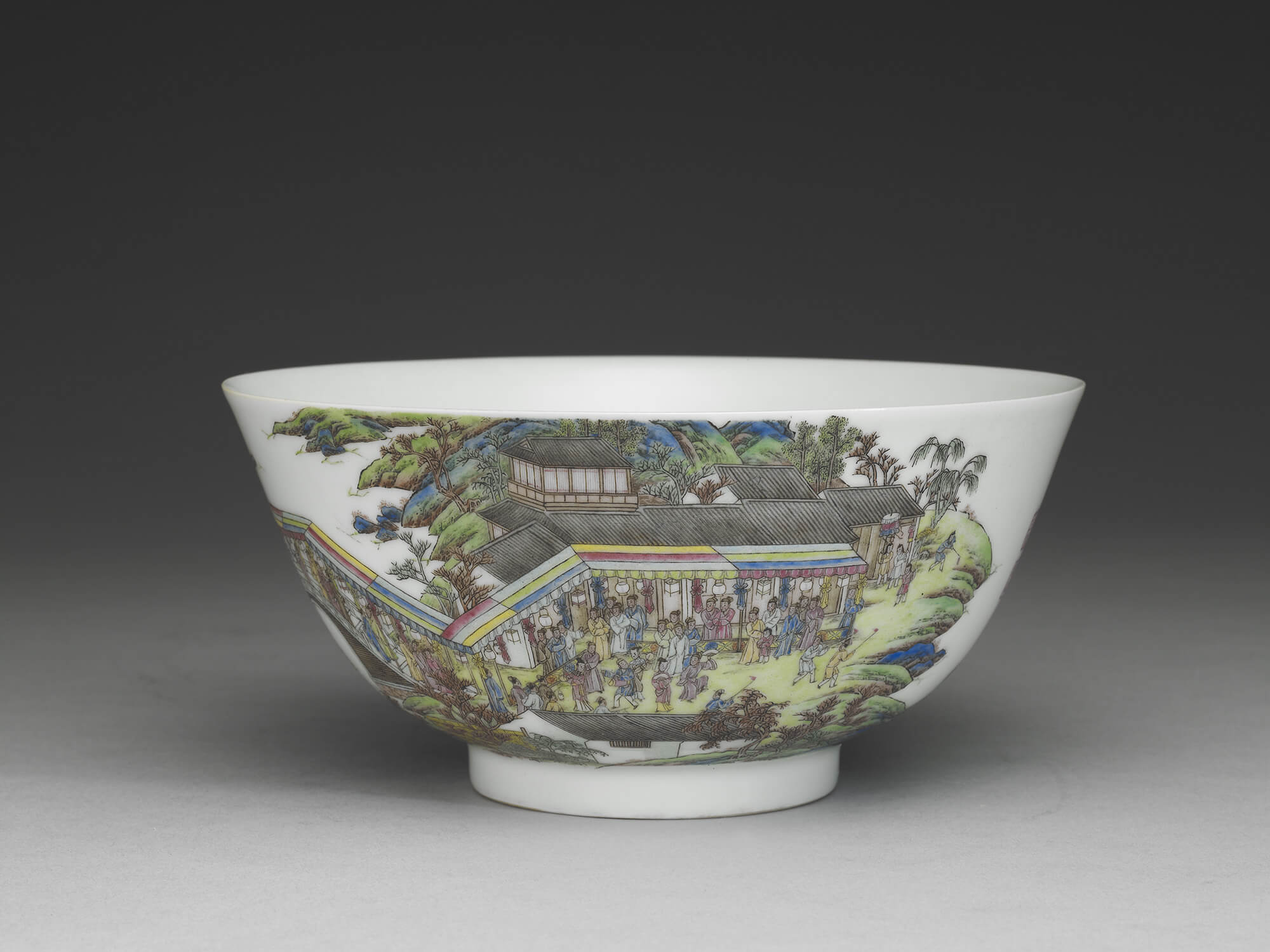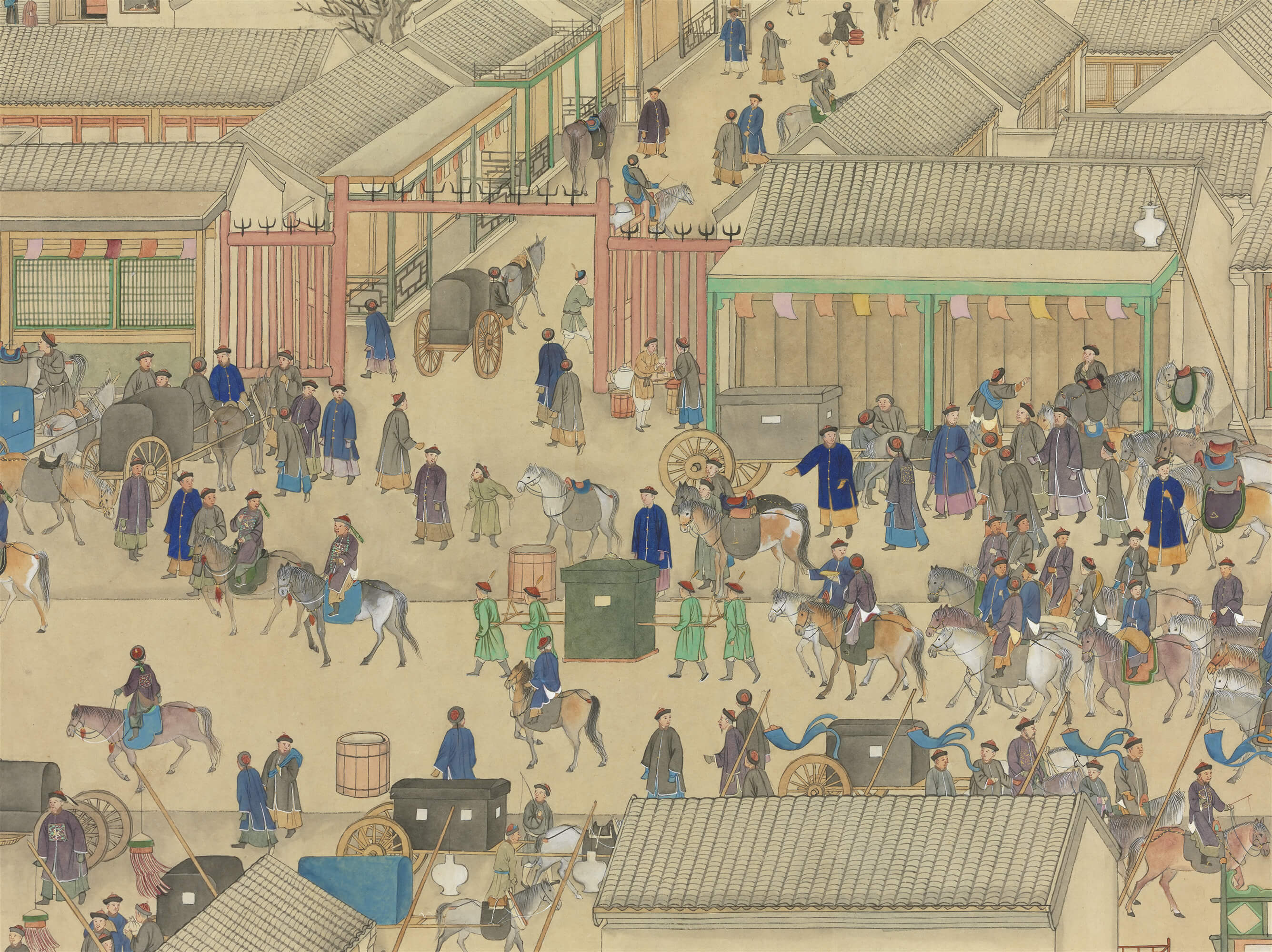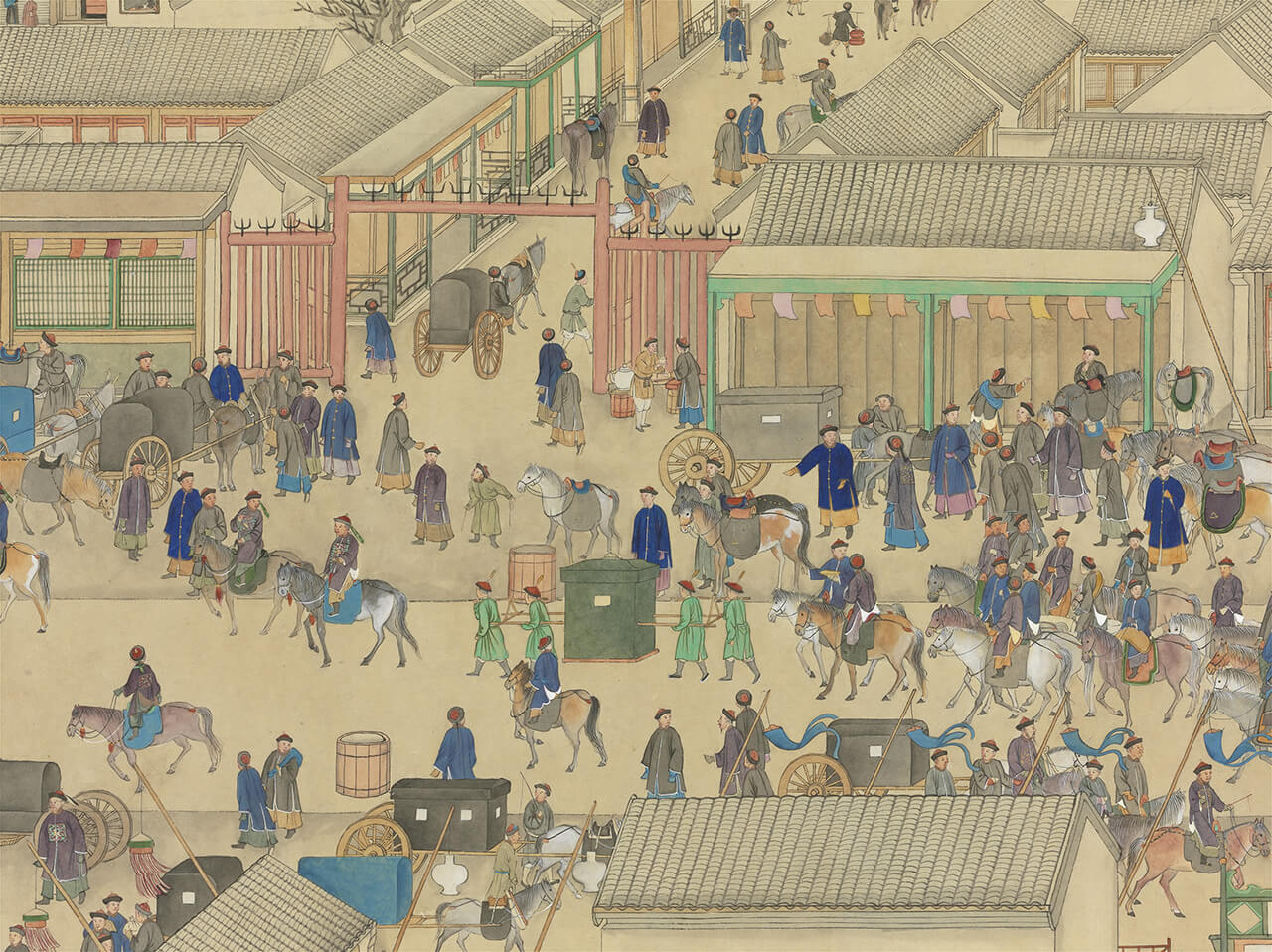Festival Celebrations
Traditional festivals reflected both ancestral wisdom and the pleasures of life. The Qingshigao (Draft History of Qing) records that in 1651 three occasions were designated as major festivals: New Year's Day, Winter Solstice, and Imperial Birthday Celebrations. The accompanying annual observances were the New Year's court assembly, winter solstice heaven-worship, and imperial birthday festivities, which followed historical and natural cycles, and demonstrated the Qing dynasty's adaptation to changing human activities and seasons, and the eternal connection between humans and nature.
New Year's Day
- Bowls with Lantern Festival scenes in painted enamels
- Qianlong period (1736–1795), Qing dynasty
According to Qing dynasty records, Beijing's Lantern Festival transformed the capital into a luminous spectacle, with lanterns adorning the city.
This pair of bowls capture the essence of the festivities through their refined decoration. The exterior surfaces display meticulous landscapes in green and blue pigments, depicting mountains, pavilions, and animated festival crowds. The dynamic scenes portray spectators viewing illuminated displays from bridges and watching dragon dances. One vessel bears a poetic inscription celebrating the harmony of urban festivities, complemented by three auspicious seal impressions. The base of each bowl bears the Qianlong reign mark in underglaze blue within a double square frame.
- Syzygy of the Sun, Moon, and Five Planets
- Xu Yang (1712–1777)
- 1761, Qing dynasty
On New Year's Day 1761, astronomers at the Imperial Observatory witnessed a rare celestial event: the simultaneous rising of the sun and moon, with five planets aligned in formation. Interpreting this as a sign of peace and abundant harvest, the Qianlong Emperor commissioned artist Xu Yang (c. 1712–1777) to document the occasion. The resulting work depicts both the Observatory where the auspicious sign was observed and the capital's New Year customs, from court officials paying respects to ordinary people exchanging festive greetings.
